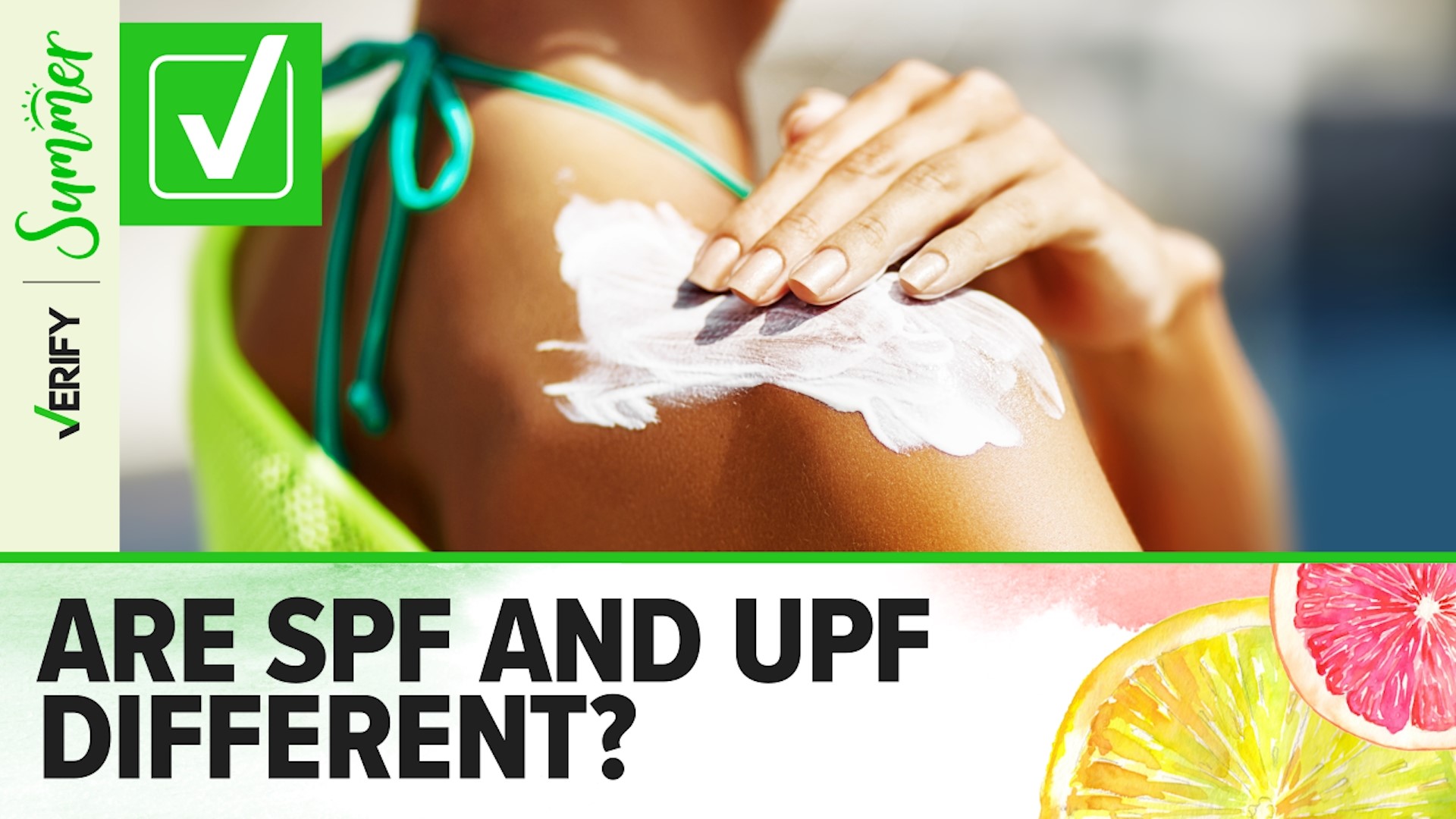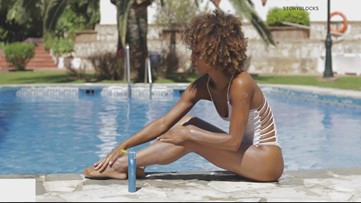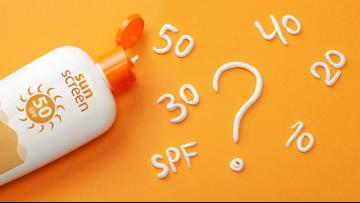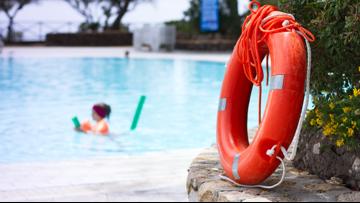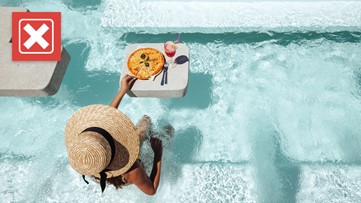Warmer weather and longer days means more time outside and more chances to be exposed to the sun. One reader texted VERIFY to ask about the difference between SPF for sunscreen and UPF for clothing, and whether one is more effective than the other.
THE QUESTION
Is there a difference between SPF and UPF?
THE SOURCES
Adam Friedman, M.D., chair of dermatology at George Washington University
Corey Hartman, M.D., founder and medical director at Alabama-based Skin Wellness Dermatology
THE ANSWER
Yes, there is a difference between SPF and UPF.
WHAT WE FOUND
Sunscreen and some cosmetic items are labeled with their SPF rating, or Sun Protection Factor. Some clothing items are labeled with their UPF rating, or Ultraviolet Protection Factor.
The main difference between SPF and UPF is that SPF is a rating for sunscreens and measures how long the product offers protection, while UPF is a rating for clothing that measures how much of the sun’s rays the product blocks.
The SPF on the label of a bottle of sunscreen tells you how much longer it would take the sun’s UVB rays to burn your skin compared to unprotected skin when exposed in the same conditions, the Skin Cancer Foundation says. So if you apply an SPF 30 sunscreen it should take 30 times longer for you to get a sunburn than without any protection.
SPF is based on how much solar energy — or UV radiation — your skin absorbs, the Food and Drug Administration (FDA) says. That means how long you’re protected also depends on factors like the intensity of the sun’s rays and where you are relative to the Earth’s equator.
For example, the sun’s rays are harshest at midday, meaning skin burns faster at that time than in the morning or evening. You could absorb the same amount of solar energy when out in the sun for 15 minutes at 1 p.m. as you would when out in the sun for an hour at 9 a.m., the FDA says.
It’s important to keep in mind that SPF only measures protection against UVB rays. The sun produces two kinds of UV rays: UVA and UVB. UVA causes your skin to age and UVB causes your skin to burn, the Skin Cancer Foundation says. Both increase your risk of skin cancer. Because of this, the Skin Cancer Foundation says it’s important to use “broad spectrum” sunscreen, which can effectively protect against both UVA and UVB rays.
UPF protection is a measurement that indicates what percentage of the sun's rays penetrate your clothing, the Melanoma Research Alliance says. A UPF 30 shirt blocks about 97% of the sun’s rays, only allowing 1/30th of them through. A UPF 50 shirt blocks 98% of the sun’s rays, only allowing 1/50th of them through. UPF 100 blocks 99% of the sun’s rays, only allowing 1/100th of them through. The Skin Cancer Foundation recommends clothing of at least 30 UPF for adequate sun protection.
All clothing has some level of UPF protection, but not all clothing comes with a UPF label.
“The difference between clothing that has a designated UPF versus that which does not is that it has been tested and evaluated,” said Adam Friedman, M.D., chair of dermatology at The George Washington University. “That doesn't mean that your clothing can’t confer some protection, but there are certain things to look for if you're not going to utilize UPF-labeled clothing.”
The Skin Cancer Foundation and Melanoma Research Alliance list several factors that impact an article of clothing’s sun protection:
Coverage: The more skin a piece of clothing covers, the better it’ll be at protecting you from the sun.
Material: Densely woven fabrics, like denim, canvas or wool, and synthetic fabrics like polyester offer more protection than sheer, woven or thin natural cloth. You can get a good sense of a fabric’s sun protection by holding it up to the light; if you can see through it, then the sun’s rays can pass through it.
Color: Dark colors and bright colors absorb the sun’s rays, and therefore provide more protection than light colors.
Fit: Loose-fitting clothes are more consistently protective than tight-fitting clothes. That’s because tighter fits can stretch, pulling the fibers away from each other and allowing more of the sun’s rays to pass through the fabric.
The Melanoma Research Alliance adds that UPF-labeled clothing is specifically designed to shield you from UV rays, which means that it can remain protective even if made from thinner fabrics or lighter colors.
SPF doesn’t quite work the same way, the FDA warns. Sunscreens wear off and become less effective with time, so your skin will absorb more of the sun’s rays if you apply a thinner layer of sunscreen or if you don’t reapply it regularly enough, regardless of the SPF.
There is no perfect way to fully protect yourself from the sun. If you’re going to be outside in the sun for an extended period of time, the best thing you can do is give yourself as much protection as possible, Friedman says.
“I think you want to take a combination approach,” Friedman said. “That includes using sunscreen SPF 30 or higher and clothing to protect the exposed areas.”
And it’s not just when you’re at the beach or pool that you want sun protection, or even just when you’re outside in the sun, says Corey Hartman, M.D., founder and medical director at Alabama-based Skin Wellness Dermatology. You’re also exposed to the sun’s rays when you’re next to a window, whether you’re in your car, in an airplane or in your office; you’re also exposed when the sky is overcast.
So, at the very least, you should apply sunscreen every day, Hartman says. He says a good way to make it a habit is to make it a part of a skincare routine every morning. And if you’re going to be exposed to significant amounts of UV rays, you should consider UPF clothing, too.
“I don't think that the casual person needs to only wear UPF clothing,” Hartman said. “But if you have an occupation, or a hobby, or a lifestyle that keeps you outside for periods of time longer than an hour or two between the hours of 10 and three, then it might be a good idea to invest in clothing that has UPF.”
